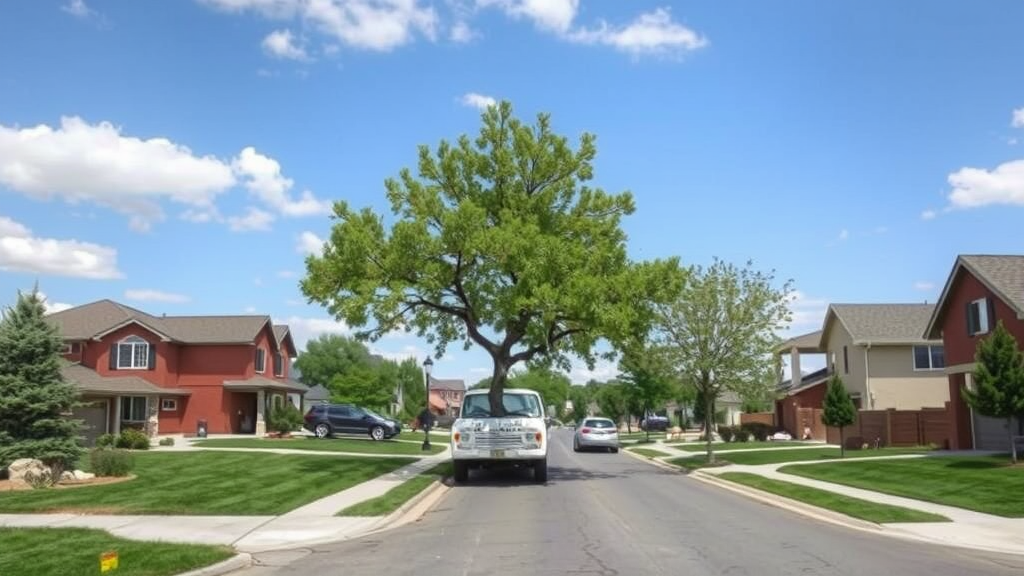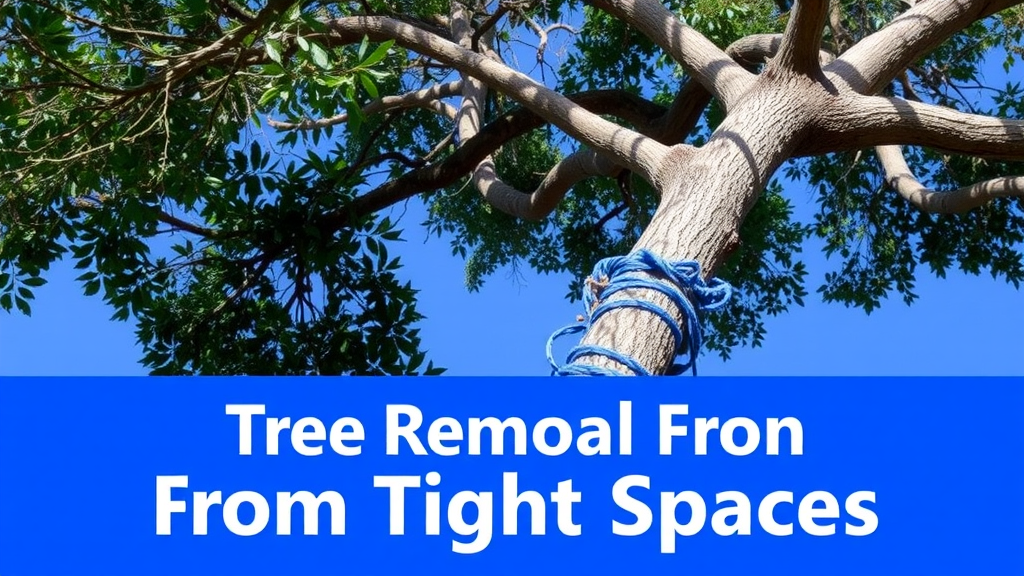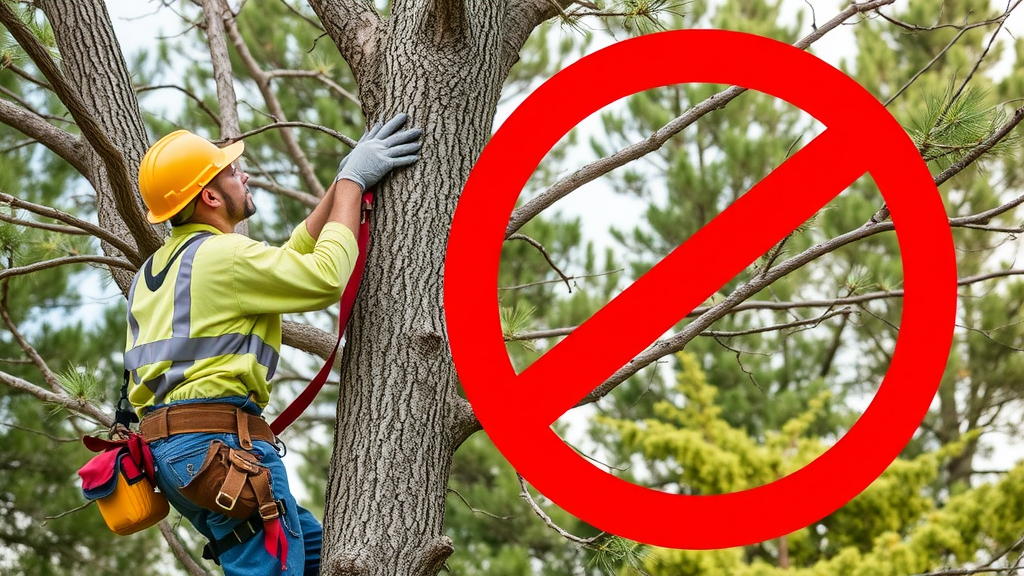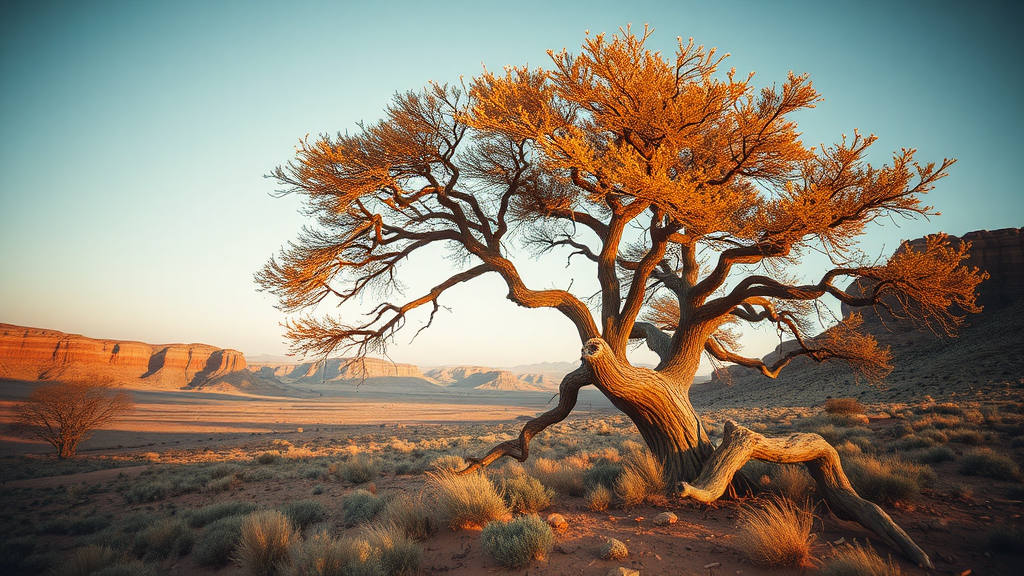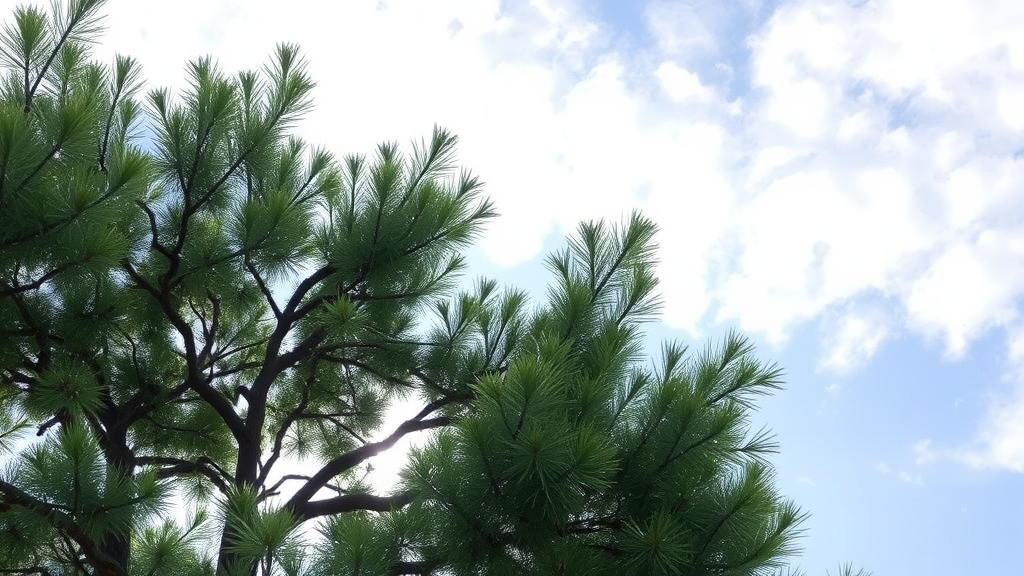Indicators On Best Tree Removal In Utah County You Should Know


Name: Truco Services, Inc.
Address: 4640 Commerce Drive, Murray, Utah 84107
Phone: (801) 466–8044
Website: https://www.trucoservices.com/
Facebook: https://www.facebook.com/TruCoServices/
Twitter: https://x.com/truco_services/status/1810260222034038867
Linkedin: https://www.linkedin.com/company/truco-services
Youtube: https://www.youtube.com/@trucoservicesllc5407/videos
PitchBook: https://pitchbook.com/profiles/company/457843-06
Hours of Operation: Monday — Friday: 8am — 5pm; Saturday — Sunday: Closed.
Categories: Landscaping Services, including: Landscape Maintenance; Commercial Landscape Installation; Custom Landscape Design; Irrigation Services; Snow Removal, Tree Services, including: Tree Removal; Pruning; Arbor Care; Tree Trimming; Tree Installation; Emergency Tree Services; Outdoor Kitchen Designing and Installation; Lawn Care and Maintenance; Fertilizer Application (performed by licensed applicators); Holiday Lighting Installation;
Profile: TruCo Services, Inc. is a comprehensive general contracting company based in Murray, Utah, specializing in landscaping and concrete services. Established to cater to both residential and commercial sectors, TruCo Services focuses on delivering high-quality outdoor maintenance and improvement solutions for Landscaping; Concrete; Snow Removal; Tree Removal.
Read more here, here and here.
Essential Indicators for Choosing the Best Tree Removal Services in Utah County
If you’re looking for tree removal services in Utah County, you want to ensure you choose a trusted professional who can handle the job safely and efficiently. With so many options available, it’s essential to know the indicators that point to the best tree removal services in your area. Here are the key factors to consider:
Experience and Expertise
Start by checking the experience of the tree removal company. A company that has been in business for several years is more likely to have the expertise needed to handle various types of tree removals. Experienced professionals can tackle difficult jobs and ensure safety precautions are taken seriously.
Licensing and Insurance
Always ensure that the tree removal service is licensed and insured. A valid license shows that the company adheres to local regulations, while insurance protects you from any liability during the job. If their workers get injured or if there’s any property damage, you want to be covered.
Customer Reviews and Testimonials
Check online reviews to gauge the reputation of the tree removal service. Websites such as Yelp or Google Reviews provide insights into previous customers’ experiences. Look for several 5-star ratings, and read through both positive and negative comments to understand what to expect. Here are some points to consider:
- Response time to inquiries
- Quality of work
- Professionalism of staff
- Fair pricing
Equipment and Techniques Used
Inquire about the types of equipment the company uses for tree removal. Modern, well-maintained equipment indicates a commitment to safety and quality work. Also, ask about their techniques for tree removal. An established company should use safe methodologies to protect your property and surrounding landscape.
Estimates and Pricing
It is essential to get multiple quotes before settling on a tree removal service. Be cautious of very low estimates, as they may indicate a lack of quality or hidden costs. A trustworthy company will provide a detailed estimate that breaks down the cost and explains each part of the service provided.
Safety Measures
Safety should always be a priority during tree removal. A top-notch company will follow strict safety protocols. Ask them what safety measures they have in place, including emergency plans and how they train their employees. Their commitment to safety not only protects their workers but ensures your property remains unharmed.
Post-Removal Clean-Up
Another vital aspect to consider is whether the tree removal service offers comprehensive clean-up after the job. A professional company should remove all debris from the site, including branches, leaves, and stump remnants. Discuss clean-up practices ahead of time and ensure they align with your expectations.
Environmental Considerations
Choose a tree removal service that considers environmental practices. A responsible company will consider whether the tree can be saved or if it’s necessary to remove it completely. Some may offer tree recycling options or replanting services, which can be an excellent way to positively impact the environment.
Communication and Customer Service
Effective communication is essential throughout the tree removal process. The best services will be responsive to your queries and keep you informed at every stage. Anyone you hire should be approachable and willing to explain their methods or answer any concerns you may have.
When selecting a tree removal service in Utah County, consider these indicators thoroughly. Not only will this help you find a reliable partner for your landscaping needs, but it will also ensure that the job is done correctly and safely. Take your time, research thoroughly, and choose wisely to foster a better relationship with the environment and your property.
Safety Considerations When Removing Trees
When it comes to tree removal, safety is paramount. Every year, countless accidents occur while attempting to cut down or remove trees. Understanding the safety considerations will not only help prevent injuries but also ensure a successful tree removal process. Here are essential tips to keep in mind.
Risk Assessment
Before you even consider cutting down a tree, it’s crucial to conduct a comprehensive risk assessment. This step allows you to identify potential hazards:
- Location: Check if the tree is near power lines, buildings, or other structures that may pose a risk during removal.
- Tree Health: Assess the condition of the tree. Dying or diseased trees might behave unpredictably when cut.
- Wind Conditions: Wind can affect how the tree falls. Avoid removal on windy days.
Personal Protective Equipment (PPE)
Wearing the appropriate personal protective equipment is one of the easiest ways to enhance safety:
- Helmet: A hard hat will protect your head from falling branches.
- Eye Protection: Safety glasses or goggles prevent debris from harming your eyes.
- Gloves: Heavy-duty gloves ensure a good grip while handling tools and protect your hands.
- Footwear: Steel-toed boots provide additional protection if something heavy falls on your foot.
- Ear Protection: If you’re using loud machinery, earplugs or earmuffs are essential.
Tools and Equipment
Using the right tools for tree removal is vital. Ensure all equipment is in good working condition before you begin:
- Chainsaw: If your tree is large, a chainsaw is likely your best option. Always read the user manual and familiarize yourself with the saw’s mechanism.
- Pruning Saw: For smaller branches, a pruning saw can be effective.
- Loppers: Use loppers for branches that are too thick for traditional pruning shears.
- Ropes: Employ ropes to control the direction the tree will fall, especially for large ones.
Proper Cutting Techniques
Employing correct cutting techniques is crucial to ensure the tree falls as planned without causing injury:
- The Notch Cut: Begin with a notch cut on the side of the tree facing the direction you want it to fall. This involves making two cuts: a horizontal cut and an angled cut above it.
- The Felling Cut: After making the notch, proceed to the back cut on the opposite side to release the tension holding the tree upright. This cut should be parallel to the ground.
- Stay Clear: Always step back and watch as the tree falls. Move to a safe distance immediately after the felling cut.
Post-Removal Safety
The work isn’t over once the tree has been successfully removed. It’s important to consider safety even after the tree is down:
- Stump Removal: Decide whether to leave the stump or remove it. If removing, be cautious with tools like stump grinders.
- Debris Management: Clear away branches and smaller debris carefully. Use gloves and appropriate footwear.
- Inspect for Hazards: Look for any hazards left behind, such as exposed roots or equipment.
Seeking Professional Help
While some tree removal projects may seem manageable, others can be too dangerous. If you feel unsure or if the tree poses significant risks, it’s best to call in the professionals. They have the training, experience, and equipment to handle the job safely and efficiently.
By prioritizing these safety considerations, you can significantly reduce the risks associated with tree removal. Whether you decide to take on the task yourself or hire a professional service, staying informed about safety practices is essential for everyone involved.
Environmental Impact of Tree Removal and Replanting
The removal and replanting of trees can significantly shape our environment. Understanding its environmental impact requires diving into both the benefits and drawbacks of these actions. You might be surprised to learn that tree management involves more than just cutting down and planting new ones.
One primary concern when removing trees is the loss of biodiversity. Trees provide habitat for countless species, from birds to insects. Their removal can disrupt these ecosystems and lead to a decline in animal populations. When assessing tree removal in your area, consider these factors:
- Native Wildlife: The types of animals that reside in your area depend heavily on the trees. Removing native species can have a cascading effect on local wildlife.
- Microhabitats: Trees create smaller ecosystems within themselves. Removing them often dismantles these microhabitats, affecting species that rely on them for food and shelter.
Moreover, trees play a vital role in air quality. They absorb carbon dioxide and release oxygen, which helps filter pollutants from the air. Tree removal can result in increased carbon emissions, ultimately contributing to climate change. Think about the following when considering tree removal:
- Carbon Sequestration: Trees store carbon. Removing them not only releases stored carbon dioxide but also eliminates future carbon absorption.
- Air Quality: Fewer trees can lead to poorer air quality due to a lower capacity to filter pollutants.
Water management is another critical aspect affected by tree removal. Trees help absorb rainwater, reducing runoff and preventing soil erosion. You might notice some of these consequences:
- Increased Runoff: When trees are removed, rainwater can run off faster, increasing the risk of flooding.
- Soil Erosion: The protective barrier that trees provide against erosion disappears, making soil more prone to being washed away.
However, tree removal isn’t always harmful. Managed correctly, it can pave the way for improved landscape health. For instance, dead or diseased trees can pose significant hazards. Removing these can:
- Enhance Safety: Dead or rotting trees are more likely to fall, posing risks to people and property.
- Improve Overall Health: When trees are diseased, their removal allows healthier trees more space and resources to thrive.
Replanting offers a chance to restore some of the lost benefits. The choice of trees matters significantly. Planting native species can replenish lost habitats and contribute positively to the local ecosystem. Here are a few benefits of replanting:
- Restoration of Habitat: New trees provide homes for birds and other wildlife.
- Enhanced Biodiversity: By planting a variety of species, you can support a wider range of wildlife.
- Improved Soil Quality: New trees improve soil structure and health through their root systems.
While replanting does have benefits, keep in mind that it takes time for new trees to grow. Young trees cannot immediately fulfill the roles that mature trees played. That’s why it’s key to strike a balance between removal and replanting.
To ensure a healthy environment, consider the following steps when managing trees in your area:
- Assess the Need: Before removing a tree, determine whether it is a risk or if there are alternatives to removal.
- Choose Wisely: If you do need to remove a tree, carefully select replacement species that are native to the area.
- Plan for Growth: Understand that new trees will take years to mature and effectively replace the benefits of the removed tree.
Ultimately, the impact of tree removal and replanting hinges on thoughtful actions. By prioritizing the environment and focusing on the intricate relationships between trees, wildlife, and the ecosystem, you can help create a more sustainable future.
Cost Factors to Consider for Tree Removal in Utah County
When considering tree removal in Utah County, numerous cost factors come into play. Understanding these factors can help you budget effectively and avoid unexpected expenses. Here are key components that impact the overall price of your tree removal project.
Size of the Tree
The size of the tree is perhaps the most significant factor affecting removal costs. Taller and larger trees require more manpower, equipment, and time to safely remove. Generally, costs are calculated per foot. Here’s a basic overview:
- Small trees (under 30 feet): $200 — $500
- Medium trees (30 to 60 feet): $500 — $1,200
- Large trees (over 60 feet): $1,200 — $2,000+
Tree Location
The location of the tree plays a crucial role in determining the removal cost. If the tree is located near power lines, buildings, or other obstacles, special precautions must be taken, which can increase the price. Consider the following:
- Close proximity to structures: May require additional insurance and safety measures, raising costs.
- Access barriers: Narrow driveways or difficult terrain may need specialized equipment, impacting labor costs.
Health of the Tree
The health of the tree can also affect removal expenses. A healthy tree may be more challenging to remove due to its robust branches and trunk. Conversely, a dead or diseased tree might be easier to take down, but it could have a higher risk of falling unexpectedly. Here are general costs related to the tree’s condition:
- Healthy trees: Typically more expensive to remove.
- Diseased or damaged trees: Might pose additional hazards, requiring more caution and thus increasing the overall expenses.
Permits and Regulations
In certain areas of Utah County, permits may be necessary for tree removal, especially in residential neighborhoods or protected areas. Obtaining a permit incurs fees and might prolong the overall removal process. Always check local regulations to see if a permit is required before starting a project. Costs may include:
- Permit fees: Varies by location.
- Fines: Possible if trees are removed without proper authorization.
Add-on Services
Beyond basic removal, you may consider additional services that can affect the total cost:
- Stump grinding: Average costs can range from $60 to $350 depending on the stump’s size.
- Tree trimming: If you wish to clear branches before removal, this service can add an extra $200 to $600.
- Debris removal: Some companies charge separately for hauling away branches and debris, ranging from $50 to $150.
Seasonal Factors
The time of year can also influence costs. In Utah County, tree removal might be more expensive during peak seasons like spring and fall due to high demand. Conversely, winter tends to be a slower season, potentially leading to lower rates. Consider scheduling your tree removal during off-peak times for potential savings.
Labor Costs
Labor costs vary by company and location. Be sure to check reviews and consult multiple contractors for quotes. A licensed and insured tree removal service provides peace of mind but may come at a premium. Here are some labor cost considerations:
- Experience: More experienced teams might charge higher rates but provide quality work.
- Insurance needs: Companies with appropriate insurance can cost more due to liability protection, which ensures safety during the removal process.
Various factors influence the cost of tree removal in Utah County. By understanding the size of the tree, its location, health, required permits, potential add-on services, seasonal values, and labor costs, you can make a well-informed decision. Ideally, consult with local professionals to get detailed estimates based on your specific situation to avoid any surprises.
DIY Tree Removal vs. Hiring Professionals: Pros and Cons
When considering tree removal, you may find yourself caught between the decision to go the DIY route or hire professionals. Both options have their advantages and disadvantages, and understanding them can help you make the best choice for your situation.
DIY Tree Removal: Benefits and Drawbacks
Removing a tree yourself can seem appealing for several reasons. Here are some pros of opting for a DIY approach:
- Cost savings: One of the biggest advantages of DIY tree removal is saving on labor costs. You won’t have to pay for professional services, which can sometimes be quite expensive.
- Control: You get to manage the entire process. This includes choosing the time, equipment, and methods you want to use.
- Learning experience: If you enjoy hands-on projects, removing a tree can be a valuable learning opportunity. You can develop new skills related to gardening and landscaping.
However, the cons of DIY tree removal can’t be overlooked:
- Safety risks: Tree removal can be dangerous, especially if the tree is large or close to structures. Injuries from falling branches or accidents with chainsaws are serious concerns.
- Incomplete job: If you’re inexperienced, you might not remove the entire tree properly. This can lead to issues with stumps, roots, and future growth.
- Tool costs: While you save on labor, the tools needed for tree removal (chainsaws, safety gear, etc.) can be quite expensive. You may also need to rent equipment, adding to your costs.
Hiring Professionals: Advantages and Limitations
On the other hand, hiring professionals for tree removal comes with its own set of benefits:
- Expertise: Professional arborists have the knowledge and skills to safely and effectively remove trees. They understand how to handle various types of trees and situations.
- Safety: Trained professionals are equipped with proper safety gear and techniques to minimize risks. This can be particularly important for large trees or trees near buildings.
- Cleanup: Many tree removal services will also handle the cleanup process, taking away debris and leaving your yard looking neat and tidy.
However, there are some downsides to consider:
- Cost: Hiring professionals can be expensive. Depending on the size of the tree and the complexity of the job, the costs can add up quickly.
- Less control: When you hire someone, you’re not in charge of the process. You may have to rely on their judgment for timing and methods.
- Scheduling issues: Finding a professional who can fit you into their schedule may take time, especially during peak seasons for tree removal.
Factors to Consider
Making a choice between DIY tree removal and hiring professionals depends on various factors. Here are some points to think about:
- Size and Type of Tree: Larger trees, or those with complicated growth patterns, often require professional skills.
- Location: A tree close to power lines or structures usually necessitates a trained arborist’s expertise.
- Personal Knowledge and Skills: If you have prior experience with tree removal, you may feel more confident attempting it yourself.
- Budget: Determine how much you are willing to spend on this project. If cost is a significant concern, weigh the pros and cons carefully.
Ultimately, weighing the pros and cons of DIY tree removal versus hiring professionals will lead you to a more informed decision. By understanding both options, you can ensure that you make the best choice for your tree removal needs. Whether you decide to tackle the project yourself or enlist the help of professionals, having clear insights into the process and risks can protect your investment in your property and ensure a successful outcome.
Key Takeaway:
When it comes to selecting the best tree removal services in Utah County, several essential indicators and factors need to be considered to ensure a safe, environmentally responsible, and cost-effective approach. First and foremost, look for companies that demonstrate expertise and experience in tree removal. These organizations typically hold proper licensing and insurance, which are crucial for guaranteeing the safety of your property and the workers involved in the process.
Safety is paramount when dealing with tree removal. Trees can pose significant risks if not removed correctly, including falling branches or the tree itself. A professional service will use appropriate safety equipment and techniques to minimize hazards during the removal process. It’s wise to assess their safety protocols and ask about their training qualifications to ensure they prioritize safety in their operations.
The environmental impact of tree removal cannot be overlooked. Responsible tree removal should include considerations for replanting and environmental stewardship. Many reputable companies in Utah County actively engage in replanting efforts, ensuring that the ecosystem remains balanced and that new trees replace those that are removed. Understanding how a service handles environmental concerns can influence your decision.
Cost is another crucial factor when it comes to tree removal in Utah County. Several elements contribute to the overall price, such as the size and location of the tree, complexity of the job, and whether additional services like stump grinding are required. It’s essential to obtain multiple quotes and understand what services are included to avoid unexpected charges.
Weighing the pros and cons of DIY tree removal versus hiring professionals is vital. While DIY might save money, it also poses risks, especially if you lack the necessary skills and equipment. Hiring professionals, on the other hand, can provide peace of mind through their expertise and efficiency, despite potentially higher costs.
Understanding these key indicators and considerations when choosing tree removal services can guide you to make an informed decision that balances safety, environmental impact, and cost-effectiveness.
Conclusion
Choosing the right tree removal service in Utah County involves careful consideration of several key indicators. First, understanding the essential traits of reputable tree removal services can lead you to the best options. Look for licensed companies with positive customer reviews, as these indicators reflect reliability and expertise.
Safety should always be a priority when removing trees. Engaging trained professionals minimizes risks associated with tree removal, protecting both your property and the surrounding environment. Awareness of potential hazards, such as falling branches or nearby power lines, is crucial for a successful operation.
The environmental impact of tree removal cannot be overlooked. Responsible companies prioritize sustainable practices, like replanting trees and managing local ecosystems, which ensures that nature can thrive alongside human development. When weighing your options, consider not just the immediate effects but also the long-term health of your landscape.
Cost is another factor to ponder, as tree removal services can vary widely in price. It’s essential to get multiple quotes and understand what services are included. Hidden fees can add up, so ensure you ask about any additional costs.
While DIY tree removal may seem cost-effective, it comes with its own set of challenges. Weighing the pros and cons of handling the task yourself versus hiring professionals is vital to making an informed choice. Ultimately, by keeping these indicators in mind, you can confidently select the best tree removal service in Utah County. Prioritizing safety, environmental health, and fair pricing, will lead you to the best solution for your tree removal needs.
If you need a tree service in Utah, you can call:
Truco Services, Inc.
4640 Commerce Drive
Murray, Utah 84107
(801) 466-8044
https://truetreeservices.com/


